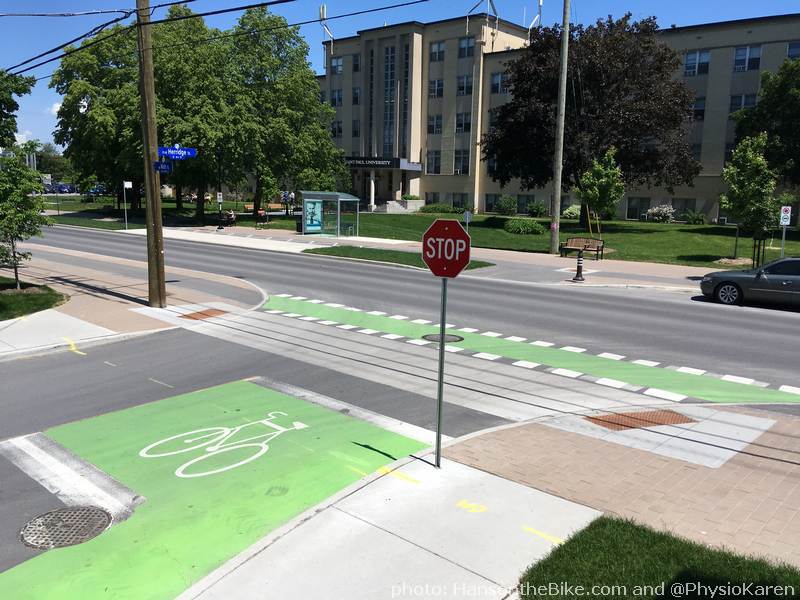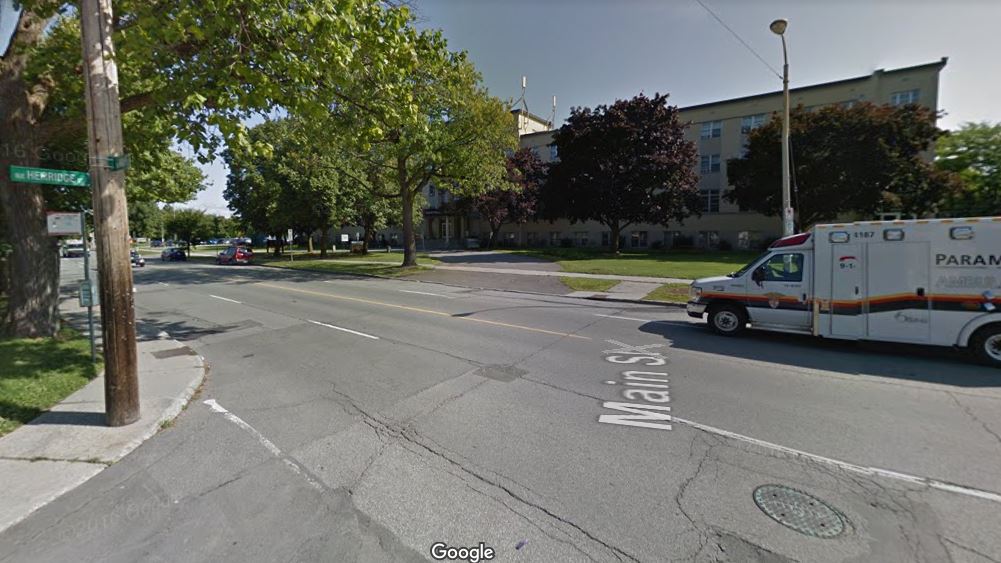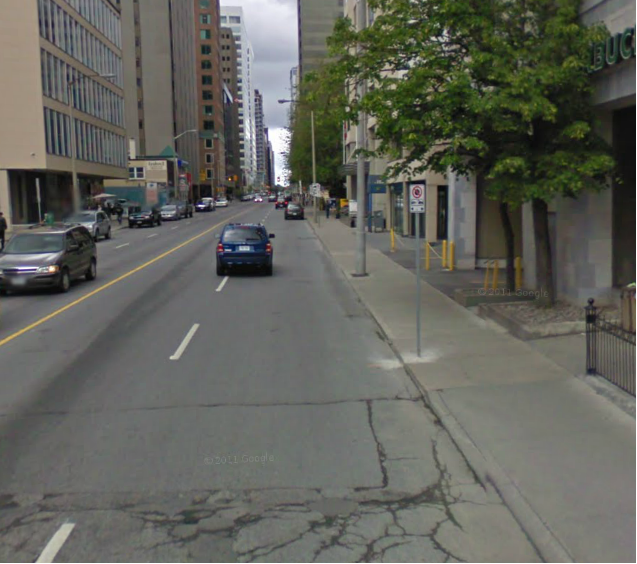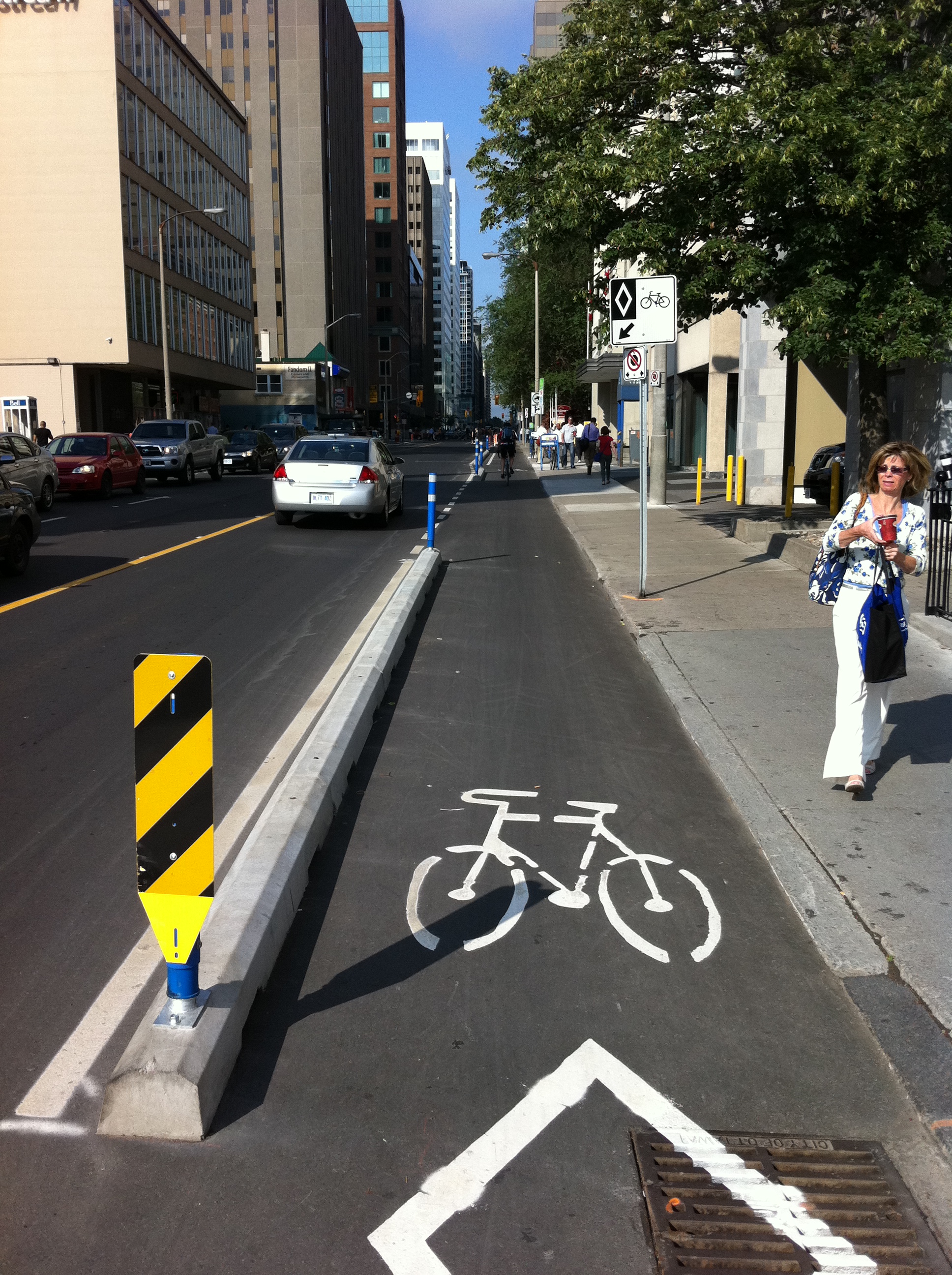Ottawa is the capital city of Canada. It was the fifth municipality in Canada to adopt a Complete Streets policy. Ottawa’s Complete Streets Framework, adopted in 2015, provides implementation guidance. TCAT’s blog posts include a profile of Main Street and an analysis of Ottawa’s complete street policy.
Ottawa
In October 2015 Ottawa City Council approved a Complete Streets Framework that identifies how the Complete Streets policy, approved by Council as part of the Transportation Master Plan Update in November 2013, will be implemented. The framework also provides guidelines for Multi-Modal Level of Service (MMLOS) on how to assess the various level of service for the different modes of transportation and what the specific target service levels for each mode of transport, for a given the location and context of the transportation project.
Situated entirely within the historic Old East Community, Main Street is the first Complete Street redevelopment of a major arterial road within the City of Ottawa. Originally constructed as a four-lane high capacity arterial road, with narrow pedestrian sidewalks, the previous design contributed to an undesirable and unsafe environment for the local residents and patrons reliant on the street daily. The two-year Complete Street construction project was initiated in 2015, due to the need to replace water and storm sewer infrastructure underlying the street. The capital project provided an opportunity for the City to implement the design guidelines for all new and redeveloped streets that had been adopted within the 2013 Transportation Master Plan. These guidelines “seek to balance the needs of all users in a sustainable way” (City of Ottawa, 2013). The redevelopment of Main Street includes the creation of separated raised bike lanes. Widening of sidewalks, now using sidewalk pavers. Replacement and addition of on-street furniture. Enhanced on-street vegetation, such as trees and shrubs. Improved on-street parking. New and improved transit shelters and orientation. Addition of a central turning lane to improve traffic flow. Removal of slip-lanes at the Riverdale and Main St intersection, to a standard T-intersection. Addition of new signage and on-street paint to highlight bicycle infrastructure. The transformation of Main Street has spurred new interest in infill development within the Old East Community to capitalize on the historic character and central location of this community.
Photo Credit: Hansonthebike. (2017, June 25). Main Street Ottawa opens as (almost) Complete Street. Retrieved October 20, 2017, from http://hansonthebike.com/2017/06/19/ottawa-opens-main-street-complete-street/
In November 2014, the City of Ottawa opened its first Complete Street, a section of Churchill Ave from Carling Ave to Princeton Ave. The street was due for a major rehabilitation and replacement of linear infrastructure, and, as part of its Ottawa on the Move project the City saw this routine construction as an opportunity to make major improvements to the right-of-way, including: raised cycling lanes improved street lighting traffic control at three intersections traffic calming measures concrete curbs and sidewalks streetscaping utilities relocation.
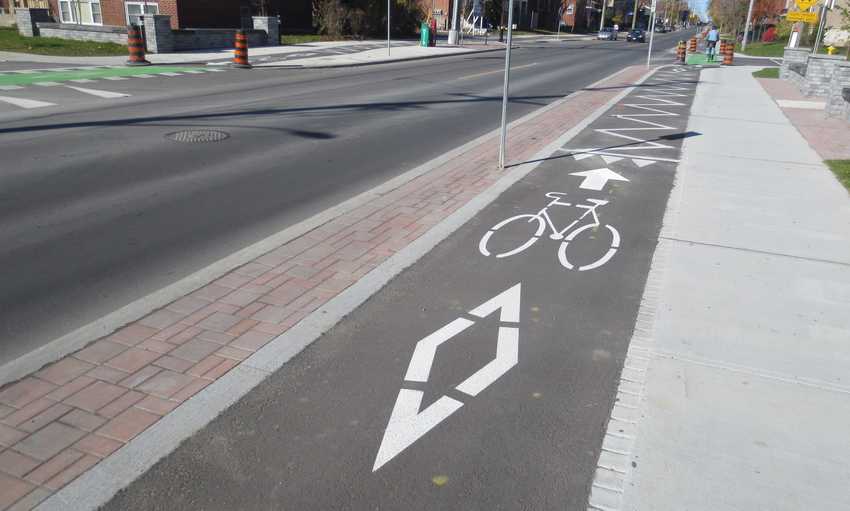
In 2011, the City of Ottawa completed a pilot project for the redesign of Laurier Avenue West in the central part of the city. This redesign includes the first downtown segregated bike lane in Ontario. Other Complete Streets improvements include:
- New yield signs that instruct motorists to yield to cyclists and pedestrians when making right turns;
- New left-turn bicycle boxes at intersections to help cyclists turn left;
- New turning restrictions, including restrictions for right turns on red lights;
- New stopping, parking, loading and accessible transportation drop-off zones;
- New paint markings and informational signage.
Bicycle counts are ongoing along the Laurier Avenue West segregated bike lanes. During rush hour May 31, 2012, the number of cyclists for the month surpassed 50,000, the highest monthly number yet since the two-year pilot project began in July of 2011. Although this street has incorporated a Complete Street approach, it is not described as a Complete Street by the municipality at this time. Churchill Avenue is considered Ottawa’s first Complete Street of many.
Ottawa Cycling Plan
- “The OCP2013 provides a policy and implementation framework in support of the City’s Official Plan (in particular, complete communities and transit-oriented development goals) and Transportation Master Plan objectives (in particular, for complete streets as well as sustainable transportation mode shares).”
- “Incorporating health-promoting, child-friendly design, and integrating complete streets principles as found in the Official Plan, will encourage children to cycle.”
- “The City’s Transportation Master Plan incorporates a section on complete streets, 58, that directs all roadways to be developed to consider the needs of all users, including cyclists. The type of cycling facilities implemented along any roadway will, however, take into consideration the different characteristics of each part of the city, as well as the land use characteristics of each roadway segment.”
Read Ottawa’s Cycling Plan Here
Ottawa Pedestrian Plan
- “Vibrant communities that incorporate Complete Streets to meet the needs of users, including pedestrians, are critical for improving the perception of safety and encouraging active transportation. Infrastructure and street characteristics play an important role in promoting or inhibiting the safety of active transportation; 64% of Ottawa residents report that access to safe streets and other public spaces is the most significant infrastructure barrier to walking that they face. Developing Complete Streets by introducing measures such as traffic calming, a reduction of speed limits, and increased safety at intersections has a significant impact on both actual and perceived safety, and increases the viability of walking as a means of transportation.”
- “Creates Complete Streets that make walking trips more direct, interesting and productive, within a pedestrian-scaled permeable urban environment;”
Read Ottawa’s Pedestrian Plan Here
Situated entirely within the historic Old East Community, Main Street is the first Complete Street redevelopment of a major arterial road within the City of Ottawa. Originally constructed as a four-lane high capacity arterial road, with narrow pedestrian sidewalks, the previous design contributed to an undesirable and unsafe environment for the local residents and patrons reliant on the street daily. The two-year Complete Street construction project was initiated in 2015, due to the need to replace water and storm sewer infrastructure underlying the street. The capital project provided an opportunity for the City to implement the design guidelines for all new and redeveloped streets that had been adopted within the 2013 Transportation Master Plan. These guidelines “seek to balance the needs of all users in a sustainable way” (City of Ottawa, 2013). The redevelopment of Main Street includes the creation of separated raised bike lanes. Widening of sidewalks, now using sidewalk pavers. Replacement and addition of on-street furniture. Enhanced on-street vegetation, such as trees and shrubs. Improved on-street parking. New and improved transit shelters and orientation. Addition of a central turning lane to improve traffic flow. Removal of slip-lanes at the Riverdale and Main St intersection, to a standard T-intersection. Addition of new signage and on-street paint to highlight bicycle infrastructure. The transformation of Main Street has spurred new interest in infill development within the Old East Community to capitalize on the historic character and central location of this community.
Photo Credit: Hansonthebike. (2017, June 25). Main Street Ottawa opens as (almost) Complete Street. Retrieved October 20, 2017, from http://hansonthebike.com/2017/06/19/ottawa-opens-main-street-complete-street/
In 2011, the City of Ottawa completed a pilot project for the redesign of Laurier Avenue West in the central part of the city. This redesign includes the first downtown segregated bike lane in Ontario. Other Complete Streets improvements include:
- New yield signs that instruct motorists to yield to cyclists and pedestrians when making right turns;
- New left-turn bicycle boxes at intersections to help cyclists turn left;
- New turning restrictions, including restrictions for right turns on red lights;
- New stopping, parking, loading and accessible transportation drop-off zones;
- New paint markings and informational signage.
Bicycle counts are ongoing along the Laurier Avenue West segregated bike lanes. During rush hour May 31, 2012, the number of cyclists for the month surpassed 50,000, the highest monthly number yet since the two-year pilot project began in July of 2011. Although this street has incorporated a Complete Street approach, it is not described as a Complete Street by the municipality at this time. Churchill Avenue is considered Ottawa’s first Complete Street of many.
In November 2014, the City of Ottawa opened its first Complete Street, a section of Churchill Ave from Carling Ave to Princeton Ave. The street was due for a major rehabilitation and replacement of linear infrastructure, and, as part of its Ottawa on the Move project the City saw this routine construction as an opportunity to make major improvements to the right-of-way, including: raised cycling lanes improved street lighting traffic control at three intersections traffic calming measures concrete curbs and sidewalks streetscaping utilities relocation.

In the City of Ottawa’s 2013 Transportation Master Plan, a chapter (Chapter 7) is devoted to Complete Streets. One of the recommended actions in this chapter is “Adopt a ‘complete streets’ policy for road design, operation and maintenance.”

